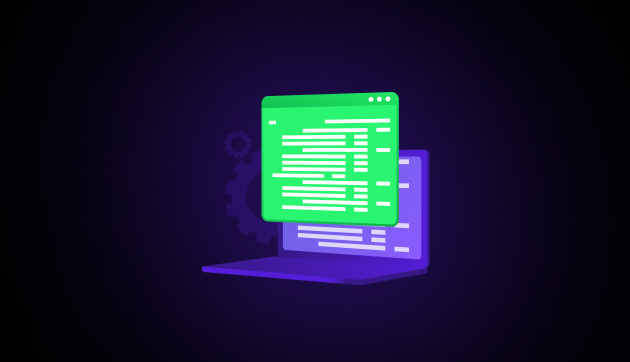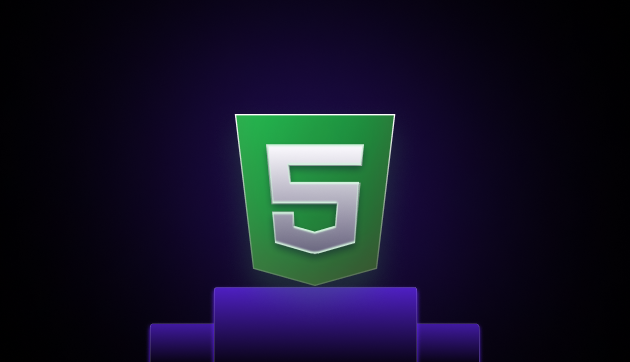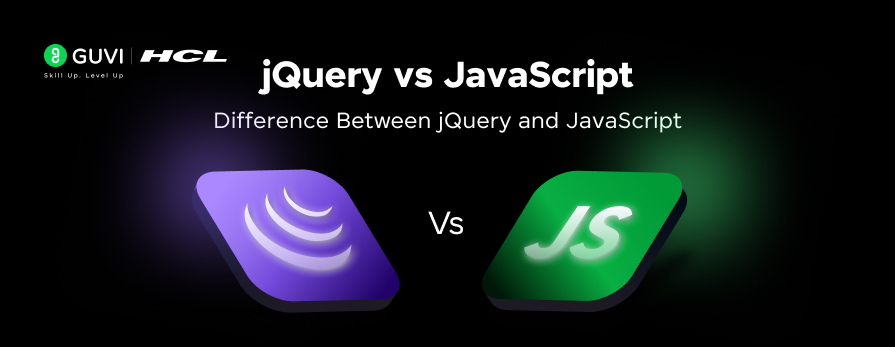
What is a Framework? A Simple Guide That Actually Makes Sense [2025]
Aug 26, 2025 5 Min Read 8809 Views
(Last Updated)
Ever wondered what a framework is and why developers seem to rely on them so heavily? Frameworks are essentially pre-written code and tools that provide a structure for developing software applications. You can think of them as ready-made foundations that save you from building everything from scratch.
When exploring framework meaning, it’s helpful to understand they’re designed to make your development process faster and more efficient. Additionally, frameworks have already been thoroughly tested by experts, which means they’re proven to work well in real-world scenarios.
Using frameworks saves time and significantly reduces the risk of errors. Throughout this guide, you’ll discover various examples of frameworks, learn why using a framework makes sense for your projects, and understand how to choose the right one for your specific needs.
Table of contents
- What is a framework?
- How do frameworks work?
- How frameworks help developers
- 1) Avoiding repetitive code
- 2) Built-in tools and templates
- 3) Improved code quality and security
- Top Frameworks You Should Know
- 1) Frontend frameworks
- 2) Backend frameworks
- 3) Mobile frameworks
- 4) Data science frameworks
- How to choose the right framework
- Concluding Thoughts…
- FAQs
- Q1. What is a framework in software development?
- Q2. How do frameworks benefit developers?
- Q3. What are some popular types of frameworks?
- Q4. How do I choose the right framework for my project?
- Q5. Are frameworks necessary for every software development project?
What is a framework?
A framework is a pre-built structure that provides a foundation for developing software applications. Think of it as a basic skeleton or blueprint that offers ready-made components that you can customize according to your specific needs.
![What is a Framework? A Simple Guide That Actually Makes Sense [2025] 1 what is a framework](https://www.guvi.in/blog/wp-content/uploads/2025/08/What-is-a-framework_-1200x630.png)
Frameworks serve multiple purposes:
- They provide standardized, reusable code components that eliminate the need to write everything from scratch
- They establish a consistent structure and set of rules for organizing your code
- They include commonly used functions and tools that handle routine tasks
Unlike starting with a blank page, frameworks give you a head start with tested, functional code that you can build upon. This approach helps you focus on developing unique features rather than reinventing solutions to common problems.
How do frameworks work?
The technical magic behind frameworks lies in what’s called “inversion of control” (IoC). Unlike traditional programming, where your custom code calls into libraries when needed, frameworks flip this relationship. With frameworks, the framework itself controls the flow and calls your custom code at specific points.
![What is a Framework? A Simple Guide That Actually Makes Sense [2025] 2 How do frameworks work](https://www.guvi.in/blog/wp-content/uploads/2025/08/How-do-frameworks-work_-1200x630.png)
Here’s what makes frameworks particularly effective:
First, they provide a structured environment with clear guidelines for organizing your project. Furthermore, they include pre-built modules for common tasks like database access, user authentication, and form handling.
Frameworks typically contain several key components:
- Support programs and compilers
- Code libraries and toolsets
- APIs (Application Programming Interfaces)
- Development templates
These elements work together to create a comprehensive development environment. Generally, frameworks aim to handle low-level functionality so you can concentrate on the unique aspects of your project.
How frameworks help developers
Frameworks are a game-changer for developers, drastically reducing development time and effort. Beyond simply providing structure, frameworks offer practical advantages that make coding more efficient and enjoyable.
![What is a Framework? A Simple Guide That Actually Makes Sense [2025] 3 How frameworks help developers](https://www.guvi.in/blog/wp-content/uploads/2025/08/How-frameworks-help-developers-1200x630.png)
1) Avoiding repetitive code
One of the most significant benefits of using frameworks is eliminating the need to write the same code repeatedly. As the programming ecosystem grows, frameworks help mitigate the time between prototyping to production.
Frameworks allow you to:
- Extract common functionality into reusable components
- Apply design patterns like the Template Method to manage similar code
- Centralize logic instead of duplicating it across your application
Consider a scenario where requirements change or a template contains a critical bug. Without a framework, you’d need to update every instance of duplicated code, risking regression bugs as code diverges. Moreover, frameworks encourage better isolation of concerns – if you find yourself duplicating code from one area to another, it might indicate poor organization.
2) Built-in tools and templates
Frameworks come equipped with pre-built components that accelerate development without compromising quality. These ready-made elements save time and prevent developers from starting from scratch on common tasks.
Most frameworks provide:
- Pre-written code libraries and modules that speed up creation
- Built-in debugging tools that identify and correct errors
- Command-line interfaces for scaffolding and deployment
- Database integration tools that simplify data management
These tools enable rapid prototyping, allowing you to quickly build functional prototypes, validate ideas, and gather feedback. This speeds up the iteration process and reduces overall development time.
3) Improved code quality and security
Frameworks enforce consistent standards across projects, promoting clean, maintainable code. They establish structured approaches that organize code, handle common tasks, and maintain modular architecture.
When you use a framework:
- Code follows established design patterns and best practices
- Consistent coding structure improves readability
- Teamwork among members becomes more effective
Implementing a code quality framework provides a structured approach throughout the software development lifecycle. It includes tools, processes, and guidelines that help developers maintain quality standards.
Top Frameworks You Should Know
The software development landscape features a diverse array of frameworks, each designed for specific purposes and platforms. Let’s explore the major types of frameworks that power modern applications.
1) Frontend frameworks
Frontend frameworks focus on creating user interfaces and handling the presentation layer of web applications. These frameworks provide ready-made components for styling and characterizing the behavior of user-facing interfaces.
- Angular: A powerful framework by Google used to build dynamic single-page web apps. It’s based on TypeScript, which helps catch coding errors early (great for large projects). Angular includes most tools you need right out of the box, so you don’t have to rely on many external libraries.
- Vue: A lightweight and flexible JavaScript framework created by a former Angular team member. Vue is easy to add to existing projects and lets you build everything from small UI pieces to full web apps. It works well with static HTML, supports reusable components, and is similar to Angular in using virtual DOM and reactive features.
2) Backend frameworks
Backend frameworks provide server-side components like data access and web services for developing robust applications. They handle the behind-the-scenes functionality that powers web applications.
- Django: A Python-based framework that helps build secure and scalable websites quickly. It comes with built-in features like user login, database tools, and an admin dashboard. Big sites like Instagram and Disqus use Django to handle massive traffic and keep things running smoothly.
- Express: A fast and flexible framework for building server-side apps using JavaScript and Node.js. It makes handling web requests, routes, and middleware much easier. Express is used by over 247,000 websites and is one of the most popular backend frameworks worldwide.
3) Mobile frameworks
Mobile development frameworks reduce the complexities of building native and cross-platform mobile applications by providing libraries, compilers, and components for different mobile platforms.
- Flutter: An open-source framework by Google for building mobile, desktop, and web apps from a single codebase. It uses the Dart language and draws the entire UI using its own graphics engine (Skia), which gives you full control over the app’s look and feel.
- React Native: Created by Facebook, this framework lets you build mobile apps for iOS and Android using JavaScript and React. It allows part of the code to be reused across platforms and connects with native device features through “bridges.” Popular apps like Tesla, Instagram, and Uber Eats use it.
4) Data science frameworks
Data science frameworks help developers build and deploy machine learning applications without writing complex code from scratch.
- PyTorch: A beginner-friendly deep learning framework written in Python. It’s popular for building and training AI models, especially in research. PyTorch supports GPU acceleration, dynamic computation graphs (great for flexibility), and works well with Python tools like NumPy and pandas.
- Apache Spark: A powerful tool used to process huge amounts of data across many computers. It can handle tasks like analyzing data, running machine learning models, and streaming data in real time. Spark is widely used in industries for big data analytics and scales efficiently across clusters.
How to choose the right framework
Selecting the perfect framework requires careful consideration of multiple factors. Before diving into framework selection, let’s examine key criteria that will guide your decision process.
![What is a Framework? A Simple Guide That Actually Makes Sense [2025] 4 How to choose the right framework](https://www.guvi.in/blog/wp-content/uploads/2025/08/How-to-choose-the-right-framework-1200x628.png)
Step 1) Define Your Project Goals: Understand what you’re building—web app, mobile app, or cross-platform. Choose a framework that matches your needs for performance, scalability, security, timeline, and budget. Don’t just follow trends—focus on what fits your project best.
Step 2) Check Language Compatibility: Pick a framework that works well with your team’s existing language skills. For example, use PHP if your team knows it well and needs access to many libraries. Newer languages may be powerful but could bring future migration challenges.
Step 3) Evaluate Community & Documentation: A strong community means better support, plugins, and learning resources. Look at GitHub stars, Stack Overflow activity, and the quality of tutorials and documentation before deciding.
Step 4) Consider Scalability & Performance: Make sure the framework can grow with your app. It should be optimized for speed and able to handle large data or traffic. A bad choice can slow down page loads by 30–50%.
Step 5) Review Learning Curve & Support: Choose a framework that’s easy to learn and well-documented. Features like clear error messages, IDE support, and hot reloading help your team work faster and more efficiently.
Want to master both frontend and backend frameworks with hands-on training? Check out GUVI’s IIT-M Certified Full Stack Development Course—built with real-world projects, industry mentorship, and placement support to launch your tech career from scratch.
Concluding Thoughts…
Frameworks truly transform the development process by providing structured, reusable foundations that eliminate starting from scratch. Throughout this guide, you’ve seen how these powerful tools save time, reduce errors, and improve code quality.
Remember that frameworks serve as your allies in development. They handle repetitive tasks, provide built-in security features, and offer standardized components that make your projects more maintainable. As you move forward in your development journey, frameworks will remain essential tools in your arsenal.
They balance structure with flexibility, allowing you to focus on solving unique problems rather than reinventing common solutions. The knowledge you’ve gained about what frameworks are and how they function will serve as a solid foundation for your future projects. Good Luck!
FAQs
Q1. What is a framework in software development?
A framework is a pre-built structure that provides a foundation for developing software applications. It offers ready-made components, tools, and guidelines that developers can customize according to their specific needs, saving time and effort in the development process.
Q2. How do frameworks benefit developers?
Frameworks help developers by reducing repetitive code, providing built-in tools and templates, and improving code quality and security. They allow developers to focus on unique features rather than reinventing solutions to common problems, ultimately speeding up the development process.
Q3. What are some popular types of frameworks?
There are several types of frameworks, including frontend frameworks (like Angular and Vue), backend frameworks (such as Django and Express), mobile frameworks (like Flutter and React Native), and data science frameworks (such as PyTorch and Spark). Each type is designed for specific purposes and platforms.
Q4. How do I choose the right framework for my project?
To choose the right framework, consider your project goals, check language compatibility with your team’s expertise, evaluate community support and documentation, assess scalability and performance needs, and look at the learning curve and available support. Your choice should align with your project’s specific requirements and long-term vision.
Q5. Are frameworks necessary for every software development project?
While frameworks are not absolutely necessary for every project, they can significantly enhance productivity, code quality, and development speed in most cases. They provide tested, functional code that you can build upon, allowing you to leverage collective wisdom and best practices from experienced developers.




































Did you enjoy this article?